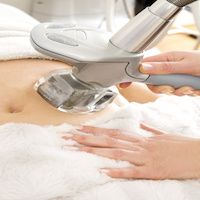Article
Body Sculpting Procedures on the Rise
Author(s):
As summer quickly approaches, the products and procedures that claim to remove excess fat are seemingly endless. One of the latest trends – body sculpting treatments – is rapidly growing in popularity.

As summer quickly approaches, the products and procedures that claim to remove excess fat are seemingly endless. One of the latest trends — body sculpting treatments – is rapidly growing in popularity.
According to the 2014 American Society (ASDS) Survey for Dermatologic Surgery Survey on Dermatologic Procedures, members of the ASDS performed more than 207,000 body-sculpting procedures in 2014 —a 16% increase from 2013, and a more than 50% jump from 2012.
More patients are gradually leaning toward minimally invasive body sculpting treatments to tackle their excess weight. The survey found the top body sculpting treatments in 2014 were:
1. Cryolipolysis (fat-freezing): 79,000
2. Radiofrequency: 49,000
3. Tumescent liposuction: 32,000
4. Laser lipolysis: 14,000
Cryolipolysis — fat-freezing – uses cooling panels to shrink fat deposits to ultimately reshape the contours on the body. According to the ASDS, the surge in this procedure’s popularity can likely be attributed to the fact patients typically resume normal activities the same day as their procedure.
The second favorite, radiofrequency, kills fat cells by using energy or heat the deep-tissue fat layer without damaging any skin or muscle.
Meanwhile, tumescent liposuction is the safest of all liposuction procedures. Dermatologic surgeons perform this by using local anesthesia and making a small incision in the skin to remove fat through a straw-like tube.
Finally, laser lipolysis — using heat from fiber-optic lasers – simultaneously stimulates collagen production while melting fat.
George Hruza, MD, MBA, ASDS President, said in a news release, “Body sculpting is among the fastest-growing areas in cosmetic dermatology. The results patients are seeing from these procedures combined with minimal recovery time make body sculpting an appealing option for more and more patients each year.”





